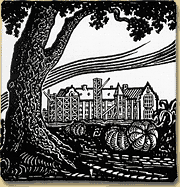The Society of Jesus was founded in 1537 by Ignatius of Loyola and six companions. Dissatisfied with the school system in the 16th Century, they established their own standardized form of education. Jesuits have since become known primarily as educators and missionaries. In 1599, a blueprint for Jesuit education was formalized in a document called the Ratio Studiorum or Plan of Study.
The first Jesuit school in Quebec was the College of Our Lady of the Angels, an elementary school for boys opened in 1635. Students were taught in the three main languages of that time: Huron, Montagnais and French. Like all Jesuit colleges of that era, the college used the Ratio Studiorum as a basis for its curriculum and methodology.
The college closed after the English conquest of Quebec in 1760. There was worldwide suppression of the Society of Jesus in the late 1700s, and the Jesuits were not to return to Canada for more than 80 years.
In 1842, the Bishop of Montreal, Ignace Bourget, invited the Jesuits to open a college in Montreal. They founded Collège Sainte-Marie in 1848. Loyola College grew out of the English program of Collège Sainte-Marie, and was established as a separate entity in 1896. On March 10, 1899, Loyola College was incorporated by an act of the Quebec Legislature.
Loyola could not grant degrees under its own name because it did not have a university charter. Graduates of Collège Sainte-Marie and Loyola received their bachelor's degrees from Université Laval and, from 1920 onward, from the newly established Université de Montréal. The Jesuit colleges, however, maintained autonomy over curriculum, methodology and graduation requirements. The quest for a charter was long sought after, but a university charter continued to elude Loyola.
Growing enrolment forced Loyola to move several times. From the corner of Bleury and Ste-Catherine streets, it moved relocated to Drummond Street in 1898 before settling once and for all in the west-end Montreal district of Notre-Dame-de-Grâce in 1916.
The college offered preparatory studies for young men, opening its doors to women students only in 1959. The college included high school and undergraduate students until 1921, when Loyola High School became a separate entity.
The curriculum at Loyola College grew from being classically based to liberal arts-oriented, but theology and philosophy remained part of every student's degree requirements until 1971-72.
IN AUGUST 1974 LOYOLA COLLEGE MERGED WITH SIR GEORGE WILLIAMS UNIVERSITY TO FORM CONCORDIA UNIVERSITY
Loyola College History


